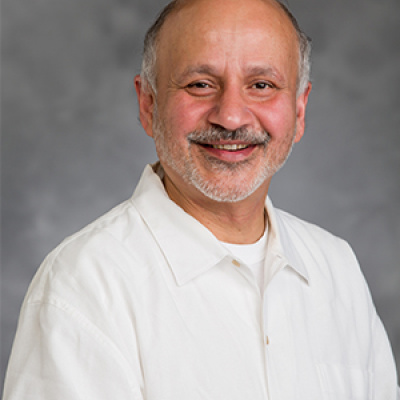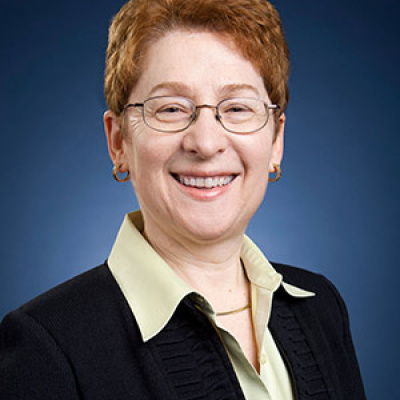Explore the faculty research, thought leadership, and groundbreaking philosophies that established Michigan Ross as one of the world’s top business schools.

The paper "Quantity Flexibility Contracts and Supply Chain Performance" by Professor Bill Lovejoy and his colleague, Andy Tsay from Santa Clara University, was published in Manufacturing & Service Operations Management in 1999. The paper delves into the concept of quantity flexibility in supply chain contracts and its potential to deal with demand uncertainties. This influential work formally captured the practice of “funneling” variability over time, whereby more variability is tolerated in earlier planning phases and less tolerated over time as the delivery date approaches. This paper has specifically led to further studies on the optimal design and effectiveness of supply chain contracts, enhancing the field’s understanding of tactical and strategic issues in supply chain management. Researchers have built on Tsay and Lovejoy's model to study the application of QF contracts in different industrial contexts and their interactions with various supply chain configurations. The concept and modeling presented in this paper have become a prominent part of the academic discourse on supply chain coordination, influencing subsequent studies in inventory management, order variability, and supply chain profitability. Thus, the paper's impact is significant and broad, inspiring much-needed research on flexible, cooperative strategies for supply chain optimization.

Professor Joel Slemrod has worked on an agenda to broaden the scope of tax analysis to address several issues that standard economics models of taxation ignore. He has written several articles analyzing and addressing the blind spots of standard economics models and has co-authored a book titled Tax Systems, which outlines the implications of these blind spots. The influence of his work is demonstrated by the recent policy attention given to tax enforcement in the United States and other countries, such as an increase in funding appropriated to the IRS to reduce evasion of high-income individuals and corporations, as well as innovative administrative policy developments through the U.S. Foreign Account Tax Compliance Act and the OECD Pillars One and Two, which subjects a group of large multinational companies to a global minimum corporate tax of 15%. Slemrod's work has received over 35,000 citations, numerous awards and accolades, and a No. 1 ranking among public finance economists per the Research Papers In Economics site.

The Carson Scholars Program at Michigan Ross is a signature feature of the Ross BBA Program and a result of the vision and generosity of David Carson, BBA '55. Carson, the former president of People's Savings Bank in Connecticut, was recognized by Forbes as one of the 500 most powerful people in the corporate United States. Based on his experiences throughout his career, Carson realized that future business leaders should understand how government works to develop effective corporate strategies for participating in the public policy arena. As a result, CSP enables Ross undergraduates to augment their on-campus learning with study in Washington, D.C., where they meet with elected officials, government experts, industry leaders, issue advocates, and lobbyists. Since its foundation in 2005, the program has enabled more than 1,000 alumni to learn about the public policy process from these experts.

The inception of the Journal of Public Policy and Marketing dates back to 1982 when it was founded by Tom Kinnear, a prominent faculty member from the Michigan Business School. Its initial name was Journal of Marketing and Public Policy. However, due to concerns raised by the American Marketing Association about potential confusion with the Journal of Marketing, it officially adopted its current name in 1983. The primary motivation behind the journal's creation was the growing interest among marketing academics in public policy during that era. During the 1970s and early 1980s, there was a growing interest in issues concerning the intersection of public policy and marketing. This interest encompassed various aspects, including advocacy for children's rights, as well as concerns related to other vulnerable groups such as the elderly, ethnic communities, and those with low income; the environmental impact of consumption and the emergence of what is now termed the "green consumer"; the adoption of energy-efficient practices by consumers following significant increases in gasoline, electric, and natural gas prices; evolving product liability doctrines that were becoming more lenient in terms of protective measures; food labeling and nutritional aspects; new consumer protection laws and measures. It is noteworthy that many of these trends are still relevant today, albeit with some shifts in emphasis, such as the increased focus on climate change.
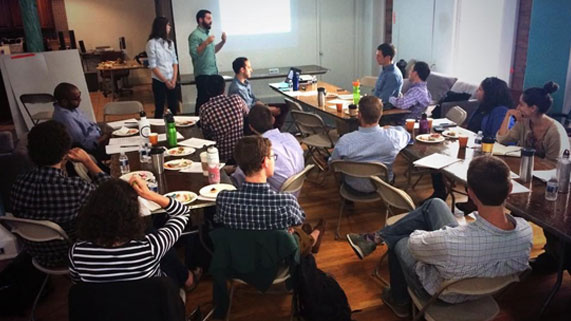
Four student-run venture funds are currently operating at Michigan Ross, more than any other business school. Collectively, these funds manage a portfolio worth more than $10 million. These funds help students learn about investing early-stage capital by making real deals with real companies and real money. The concept of student-run venture funds has been adopted by universities around the world.

Professor C.K. Prahalad was the major pioneer and advocate of the 'bottom of the pyramid' proposition that selling to the poor can simultaneously be profitable and help eradicate poverty. While appealing, the BOP proposition is also controversial. Professor Aneel Karnani was an early and prominent critic of the BOP proposition. In his 2007 article "The Mirage of Marketing to the Bottom of the Pyramid" and his 2011 book Fighting Poverty Together: Rethinking Strategies for Business, Governments, and Civil Society to Reduce Poverty, he argues for an alternative perspective. Rather than viewing the poor primarily as consumers, it is better to focus on the poor as producers and to emphasize buying from the poor. Both the private sector and government have a critical role to play in alleviating poverty. The best way to alleviate poverty is to raise the real income of the poor by providing them appropriate employment opportunities. The private sector is the best engine of job creation. The government should facilitate the creation and growth of private enterprises in labor-intensive sectors of the economy. The government should also fulfill its traditional, accepted functions of providing adequate access to public services, such as education, public health, drinkable water, sanitation, security, and infrastructure.
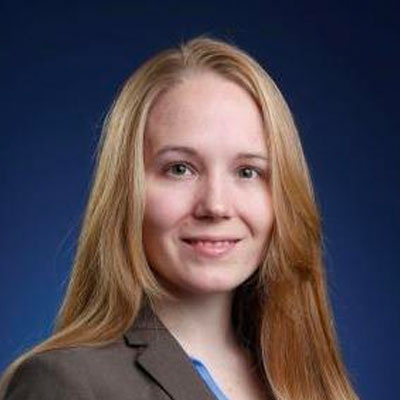
In her research published in the American Economic Review, the Review of Economics and Statistics, the Journal of Human Resources, Health Affairs, and other outlets, Professor Sarah Miller has used quasi-experimental methods to evaluate whether receiving improved access to health care in utero, in early childhood, and throughout childhood improves outcomes in adulthood. Miller and her co-authors have found that children who have received eligibility for health insurance through the Medicaid program have improved outcomes on a number of dimensions, both in terms of health and economic outcomes. Additionally, they found that the children of those children who had better access to healthcare in childhood were healthier at birth. This suggests a cycle in which investing in children's health today can have multigenerational benefits that allow the government to fully recoup the cost of its initial investment in the form of higher tax payments and lower spending on welfare programs. Miller's research has been discussed in numerous high-profile news outlets and has strongly impacted how academics and policymakers view investments in children. Furthermore, her papers have been cited nearly 500 times.

Every innovation or new product development team faces a fundamental tension: When does one transition from the ideation to the execution phase? Too early a transition risks missing a great yet unrealized idea, and too late a transition risks being unable to bring the product to market on time. This significant and ubiquitous tension poses a challenge for researchers because of the nuanced nature of imagination and creativity and the need to combine that with creating an actual item based on one’s designs. In “Ideation-Execution Transition in Product Development: An Experimental Analysis” (Management Science, 2018) by Michigan Ross Professors Stephen Leider and William Lovejoy, as well as their colleague Evgeny Kagan from the Johns Hopkins Carey Business School, the authors use a novel experimental design to reveal some expected outcomes (later transitions do not change mean performance but increase variance and risk significantly) and some unexpected ones (it is not so much the timing of the transition that drives mean performance, but rather who has decision rights). Specifically, designers should not make the transition decision; the timing should be an exogenously imposed constraint. This external requirement significantly changes designers’ behaviors and results.

Professor Gautam Kaul and two former PhD students, in their seminal 1994 study titled, "Transactions, Volume, and Volatility" convincingly argued and verified empirically that it is the occurrence of a trade in a certain direction rather than its dollar value (or volume) that has the greatest effect on prices, hence the greatest relevance when assessing the liquidity of the market where that trade took place. A trade sign is determined by the buyer or seller's information, while market conditions determine trade amount and price. This is a simple yet extremely powerful notion that was originally predicated in theory but had no empirical support before their 1994 study. The publication of this study opened the door to the accurate measurement and needed assessment of market liquidity. These days, the approach they recommended is widespread in its use.

Professor Emerita Valerie Suslow and Adjunct Professor Margaret Levenstein have pursued a collaborative research agenda on the economics of cooperative behavior among firms, with a specific focus on cartels. Agreements between competing firms to reduce the intensity of competition can include actions such as price fixing, allocating geographic markets, allocating customers, and bid-rigging at auctions. Historically, such cooperative behavior was legal throughout the world but illegal in the United States under the Sherman Act of 1890.
The U.S. National Industrial Recovery Act of the early 1930s suspended price-fixing antitrust laws in certain circumstances. In the mid-1990s, after many decades of inattention, it became clear to competition policy enforcers that cartel activity was rampant and was likely causing substantial consumer harm. This spurred new leniency and amnesty policy tools to become available to firms. In their highly cited article "What Determines Cartel Success?" Levenstein and Suslow make the case that while cartels may break up due to cheating on the agreement, the more insurmountable problems are entry and adjustments in the face of changing economic conditions. "Breaking Up Is Hard to Do: Determinants of Cartel Duration" shows that cartels that turn to price wars to punish cheaters are not stable. Highly stable cartels draw upon a vast toolkit of mechanisms to enhance their stability and, therefore, their duration and economic harm.
Levenstein and Suslow's work has been cited in policy reports by organizations around the world, such as the Organization for Economic Cooperation and Development, the United Nations, and the World Trade Organization. They continue to explore hidden or overlooked sources of harm to consumers that may result from cartel activity, most recently turning their attention to the role played by vertical relationships between firms engaged in horizontal collusion, as well as how collusion may be facilitated by the use of a price index in long-term contracts.

Associate Professor Anant Nyshadham co-founded and co-directs the Good Business Lab, a labor research and innovation lab whose work to identify workplace tools and interventions to deliver both impact to workers and returns to employers has quickly expanded across four continents over the last decade. Designed and tested through rigorous randomized controlled trials in real-world workplaces, GBL has developed several tools for rapid and broad scale. GBL's worker voice tool, Inache, has been proven to improve worker retention, reduce absenteeism, and increase worker productivity in manufacturing settings. Similarly, the tool Pratibha is a tablet-based screening and training tool for frontline supervisors that measures and addresses soft skill deficiencies and has been proven to improve the retention of supervisors and dramatically and sustainably raise the productivity of workers in factories. The Bill and Melinda Gates Foundation recently awarded GBL a multi-million dollar grant to scale these tools to more than a million workers in the next two years.

Originally developed by Professors Gretchen Spreitzer, Bob Quinn, Jane Dutton, and Laura Morgan Roberts through their research at the Center for Positive Organizations, the Reflected Best Self Exercise™ is a personal development tool that helps you to see who you are at your best, engaging you to live and work from this powerful place daily. Since its launch, the RBSE has helped thousands of executives, managers, employees, and students discover new potential. Unlike most other feedback tools, the RBSE isn't limited to self-assessment. It invites people from your life and works to share stories of moments they feel they've seen you at your best, surfacing what few of us become aware of otherwise. The RBSE enables you to gain insight into how your unique talents have positively impacted others and gives you the opportunity to further leverage your strengths at work and in life.
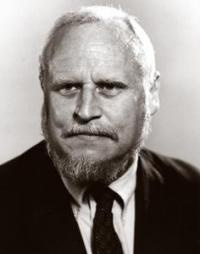
Michigan Ross has long been a pioneer in entrepreneurial education, introducing the nation's first course on entrepreneurship in 1927. However, in the early 1970s, Professor LaRue Hosmer played a pivotal role in championing entrepreneurship education at Ross. He developed and taught courses in small business management and a seminar on small business formation. He is considered the founder of the Michigan Entrepreneur Track and has also inspired present-day entrepreneurship faculty at Michigan Ross, including Professor Andy Lawlor. Lawlor was a student in Hosmer's entrepreneurial management course in 1973, and Hosmer has been an important mentor to Lawlor, helping to bridge the gap between business and teaching. Lawlor began guest lecturing under Hosmer's guidance in 1975 and assumed the teaching responsibilities for the entrepreneurship classes in 1981. Over the years, many successful companies have been born from Hosmer and Lawlor's teaching.

If people don’t pay much attention to the ads when they watch TV, they can’t possibly think a lot about what the ads are saying. How, then, does advertising have the effects on consumer buying that it does? Showing that emotional responses evoked by the ad play an important role was a major research contribution by Rajeev Batra, Michigan Ross marketing professor. Batra came to U-M in 1989 from Columbia University, where he began this research stream. Over 10 years at MichiganRoss, he grew this research stream to show more clearly how these ad-evoked emotions interacted with the ads’ more rational content, what the different types of ad-evoked emotions were and how they could be measured accurately, and how they shaped consumers’ liking for and perceptions about brands. His co-authored papers on these topics have been cited more than 8,000 times, and he has twice been listed among the most influential scholars in the study of advertising. The methods he developed for measuring the types and effectiveness of emotional ads have also been incorporated into copy-testing systems at multiple ad agencies.

Professor Paul W. McCracken was part of the Michigan Ross faculty from 1948-1986. He was a prominent economist and adviser to both Republican and Democratic presidents and was also an advocate for an active government role in economic stabilization. McCracken advocated for government policies to moderate business cycles, control inflation, and address unemployment in order to assist the disadvantaged. As a result, McCracken played a central role in addressing the rising inflation of the late 1960s and early 1970s during his tenure as an economic adviser to President Richard Nixon. McCracken criticized the government for not taking sufficient measures to combat inflation, and he supported a policy of gradualism, which aimed to slow inflation by reducing economic growth slightly without causing a recession. He proposed a combination of budget surpluses and tighter monetary policy to control inflation without severely disrupting the economy. McCracken was present during the decision to unilaterally end the Bretton Woods system, which had fixed exchange rates for major currencies. This decision resulted in far-reaching changes in the international monetary system.

In their paper, “Crowdfunding the Front Lines: An Empirical Study of Teacher-Driven School Improvement,” Professors Samantha Keppler, Jun Li, and Andrew Wu conducted the first large-scale empirical test of the frontline improvement theory in K-12 schools. The theory, originating in automotive manufacturing, states that empowering front-line employees to identify organizational and process problems and implement solutions improves organizational performance and customer satisfaction. In this case, the team of Michigan Ross professors was interested in how teacher-identified problems in the classroom and crowd-funded solutions improved learning outcomes for K-12 students.
The team analyzed data on thousands of K-12 teacher projects on the largest teacher crowdfunding site, DonorsChoose. They found that one funded project (about $400 in value), on average, achieves a significant increase in the percentage of students scoring basic and above on all tested subjects in high school, as well as science and language arts in primary and middle schools. This effect translates to two-nine additional students moving up to at least a basic level of proficiency in the correlating subject. The effect of these projects is greatest in low-income schools, where funded projects, on average, move four-10 additional students to at least a basic level of proficiency in tested subjects.
From the textual analyses of the teacher's written statements about the impact of the projects in their schools, Keppler, Li, and Wu additionally learned that student academic performance is significantly better when teachers use crowd-funded money to improve knowledge retention, as a repeated learning tool, and to differentiate or personalize learning.
Due to the demonstrated impact of teacher-driven crowdfunded projects, DonorsChoose has partnered with eight states to spend COVID-19 education relief funding on teacher crowdfunding projects. To date, these partnerships have funded over $100 million of teacher projects from over 100,000 teachers, impacting over 10 million students.












